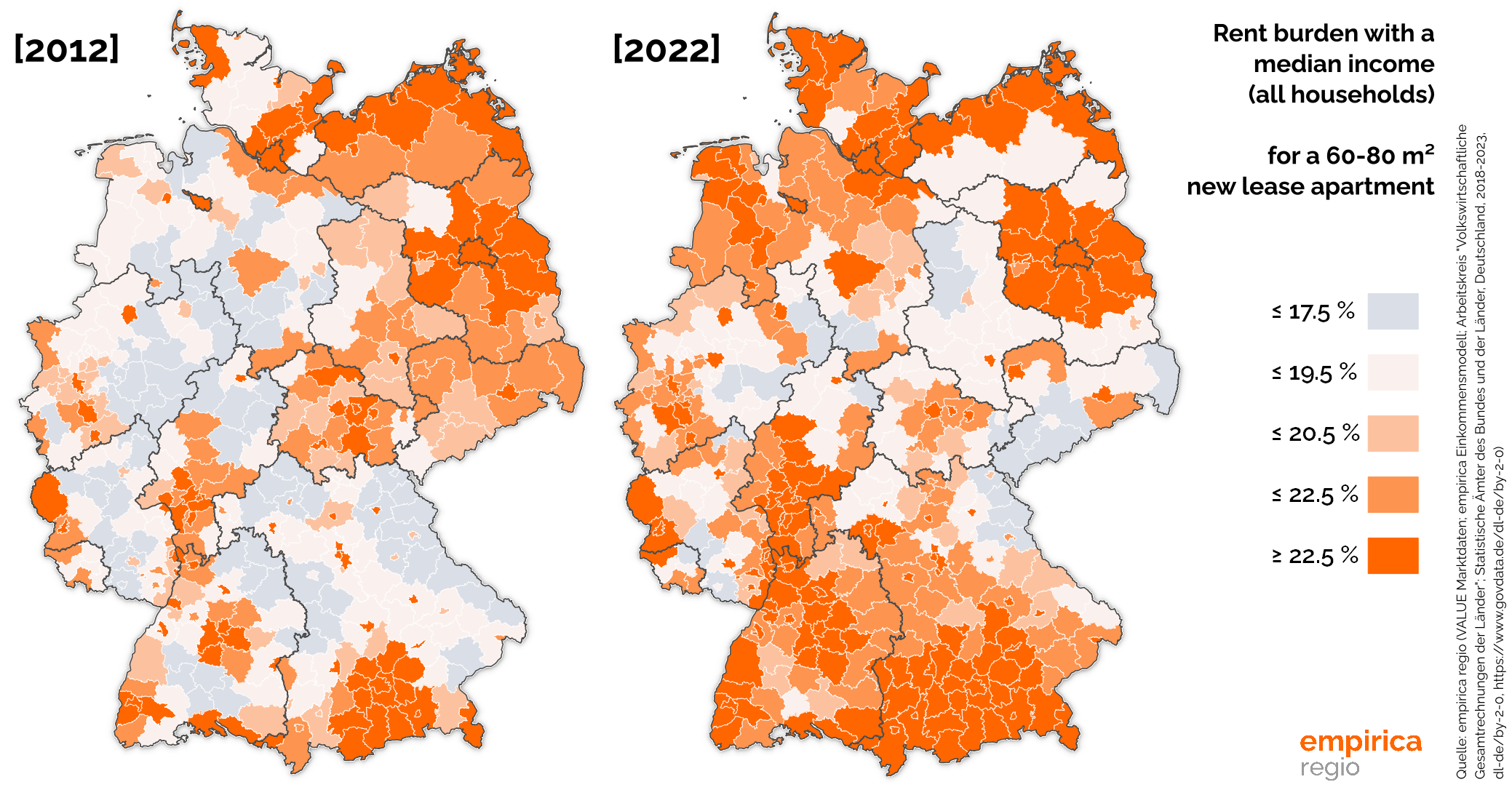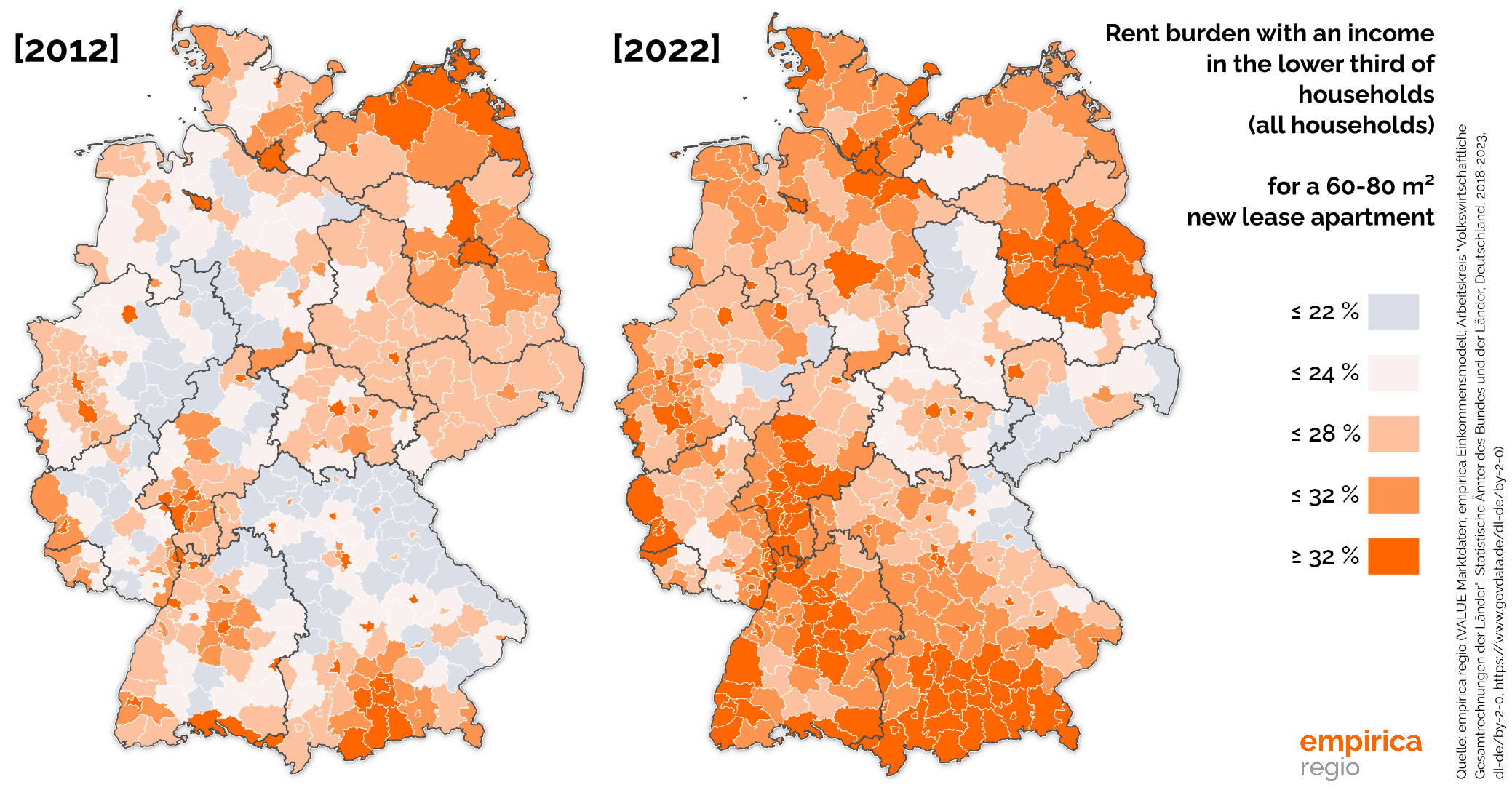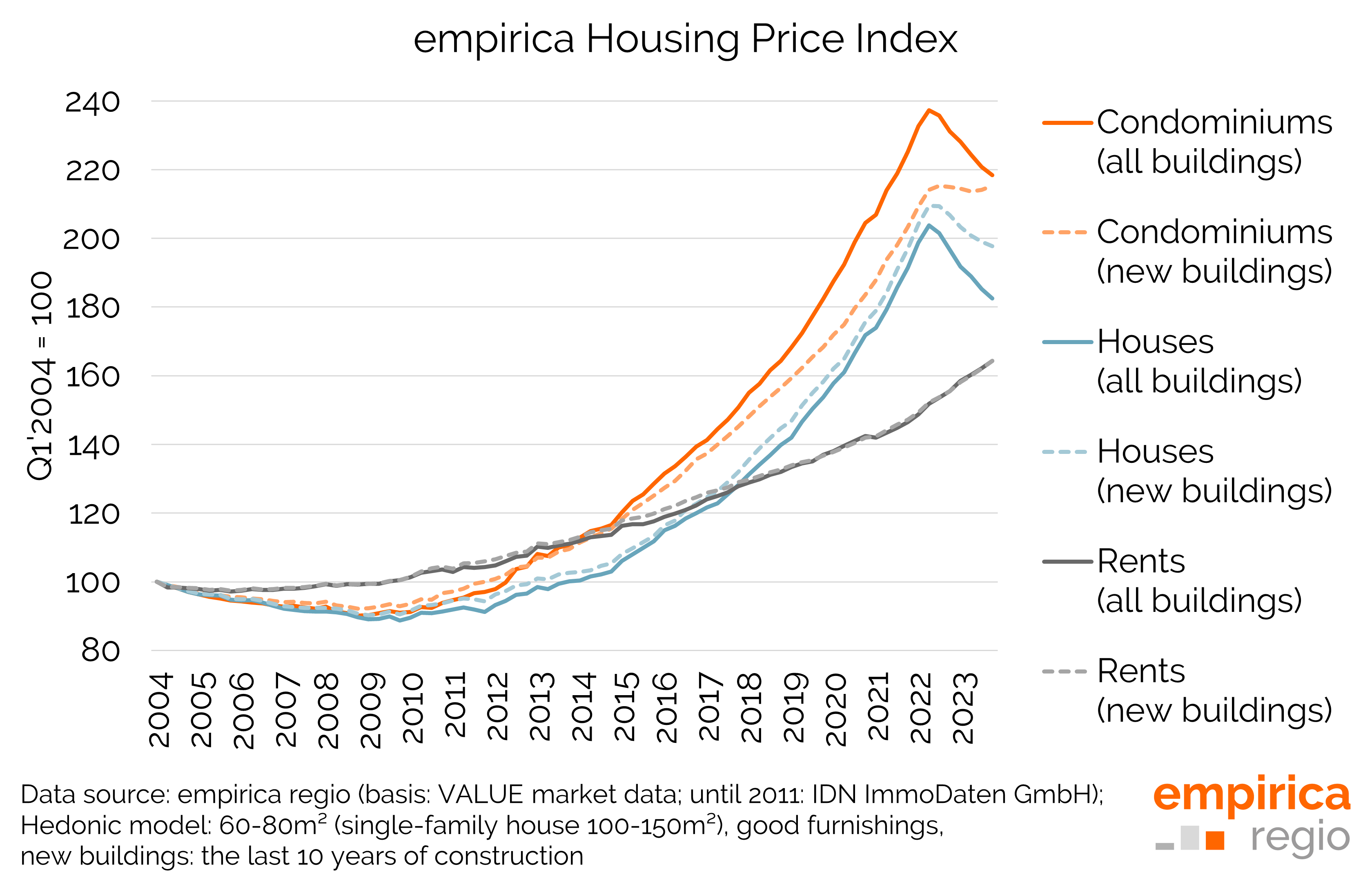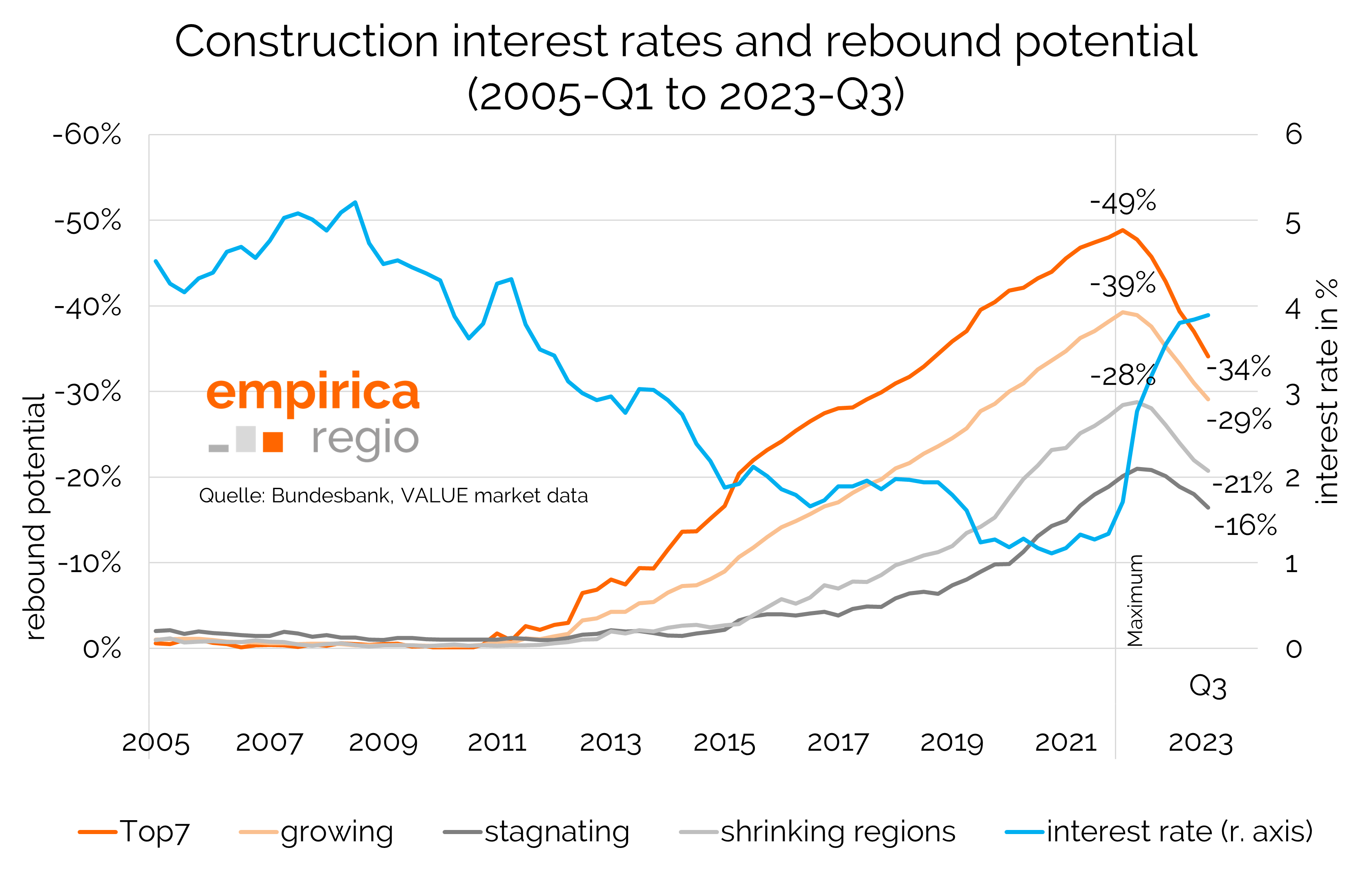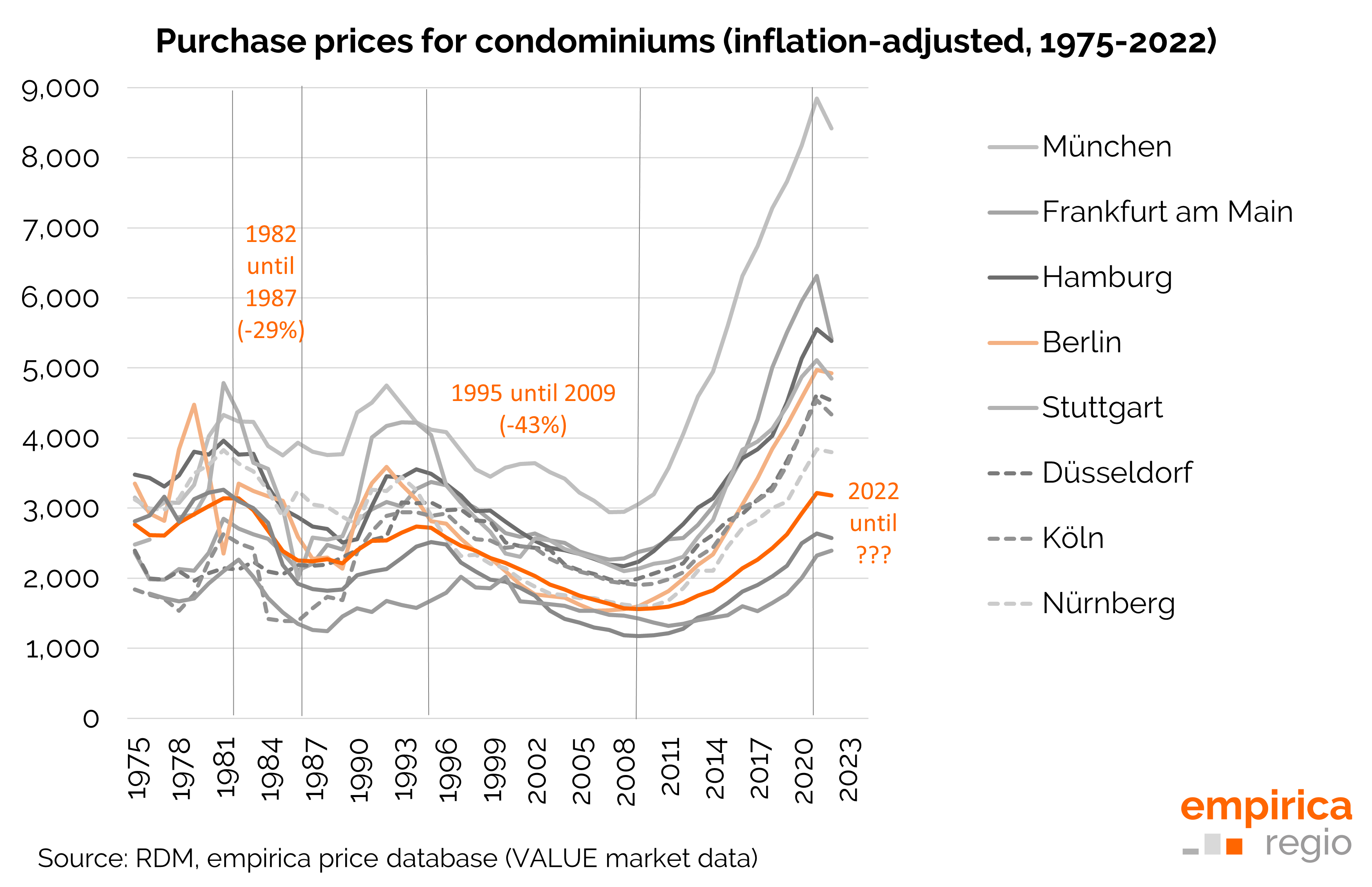Rent burden in Germany continues to rise
Net rents in major German cities (A-cities) are 70 per cent more expensive than 13 years ago. The rent burden for low-income households is 31 per cent across Germany. And: the development of rents is dependent on the development of incomes, particularly in the south. These are the key findings of a new study by economic and property data provider empirica regio GmbH. Our conclusion: The housing market is facing major challenges. The demand for new and affordable housing in Germany continues to grow. And: those who can, will stay in their own home.
The rent burden on households has risen significantly in all regions and cities. This is the result of one of our new surveys, which we would like to present here. According to the study, households with a medium income spend an average of around 24 per cent of their net income on rent when signing a new tenancy agreement, and in metropolitan areas the figure is almost a third. Between 2012 and 2022, the rent burden thus rose by around 2 percentage points from 22 to 24 per cent nationwide. In the major metropolises, the burden rose from 30 to 34 per cent in the same period.
The study took into account both the household income and the resulting rent burden of households with a middle income (median income) and households whose income is on the threshold of the lower third of the income distribution.
The second group therefore includes households that have a lower income but are still above the basic income level. Both income groups are compared with the average advertised net cold rent for a rented flat of 60 to 80 square metres. The rent burden therefore relates to the expected burden when a new tenancy agreement is concluded and not to existing tenancy agreements. Cold and warm ancillary costs are not considered in the analysis.
Sharp rise in rents, particularly in the metropolitan areas
Significant development: In general, we have seen a sharp rise in rents in high-growth regions, particularly in southern Germany and around Berlin, which have increasingly decoupled from income growth. In 2022 in particular, rents in many regions have risen even more sharply than in previous years. One consequence of this development is that those who can will stay in their current home for the time being. It will then be difficult for households that have to move.
According to our survey, low-income households in particular are suffering from the rental trend. With an income on the threshold of the lower third of the income distribution, the average household nationwide will spend around 31 per cent of its household income on rent after moving in 2022, 3 percentage points more than in 2012. Until 2021, the average annual rate of change in rents nationwide was 3.4 per cent, only slightly higher than the income trend at the threshold of the lower third (2.8 per cent per year). From 2021 to 2022, however, rents rose by an average of 5.8 per cent, while incomes in this group only increased by 2.2 per cent.
Rental price dynamics are becoming a burden for low-income households
Our conclusion is therefore: even if there are exceptions, the high rental price dynamics since 2021 are increasingly becoming a burden, especially for low-income households. If these households have to move, there is a threat of considerable additional burdens. At the same time, we are seeing an increase in the cost of living that will once again significantly overshadow the rental price trend. The remaining budget will then become smaller. We therefore urgently need an increased supply and affordable housing to provide relief here.

